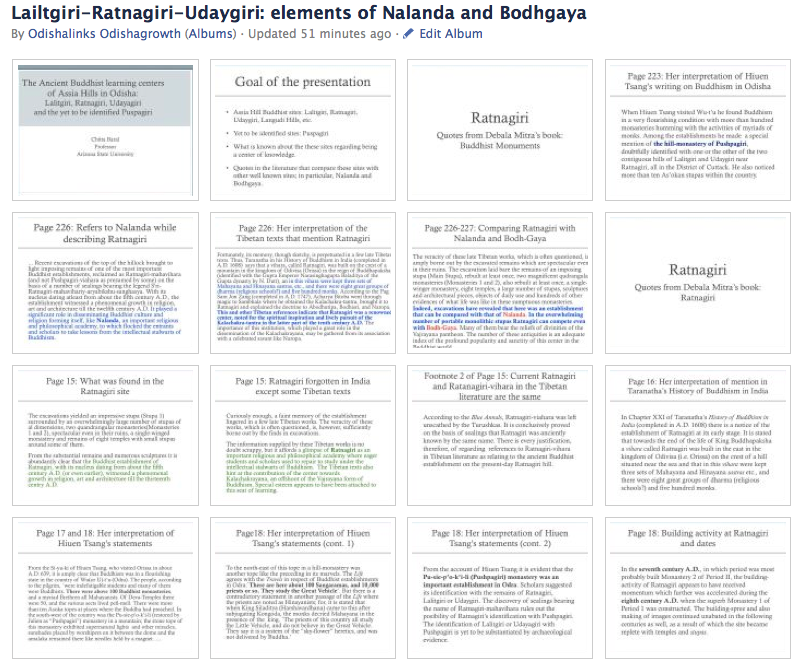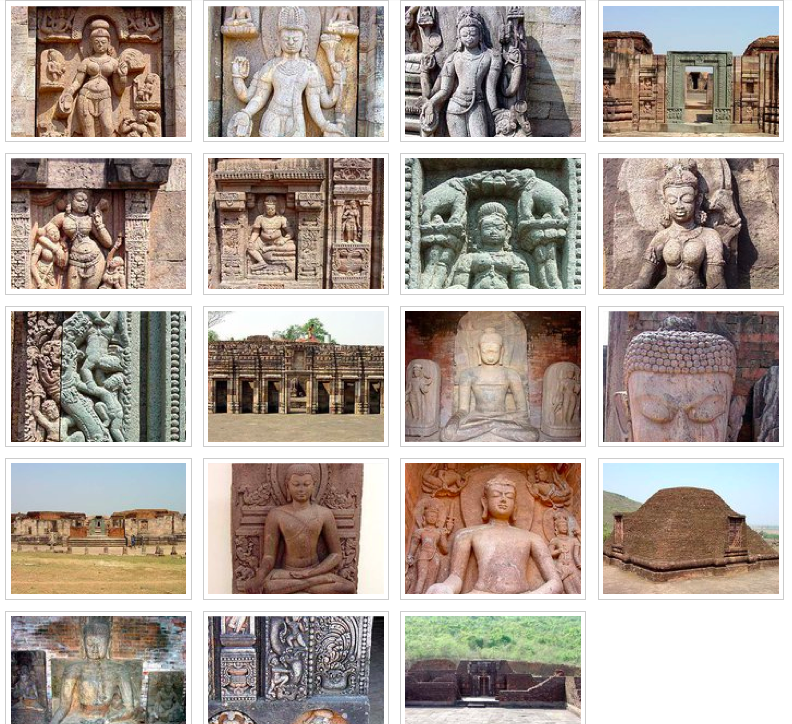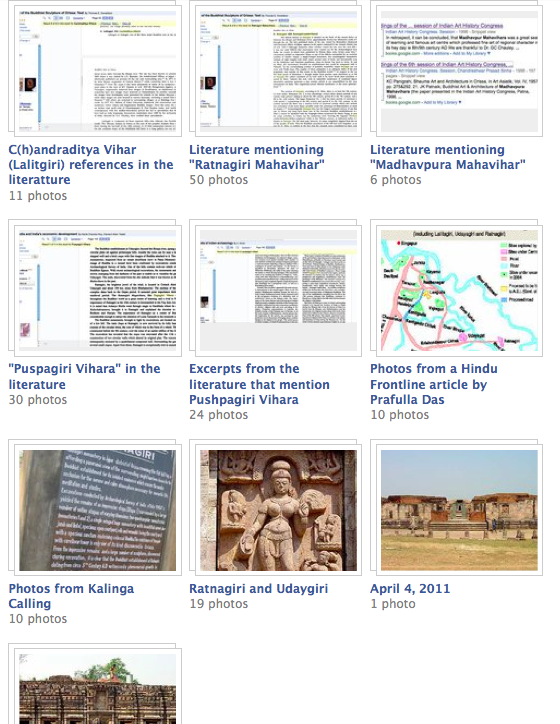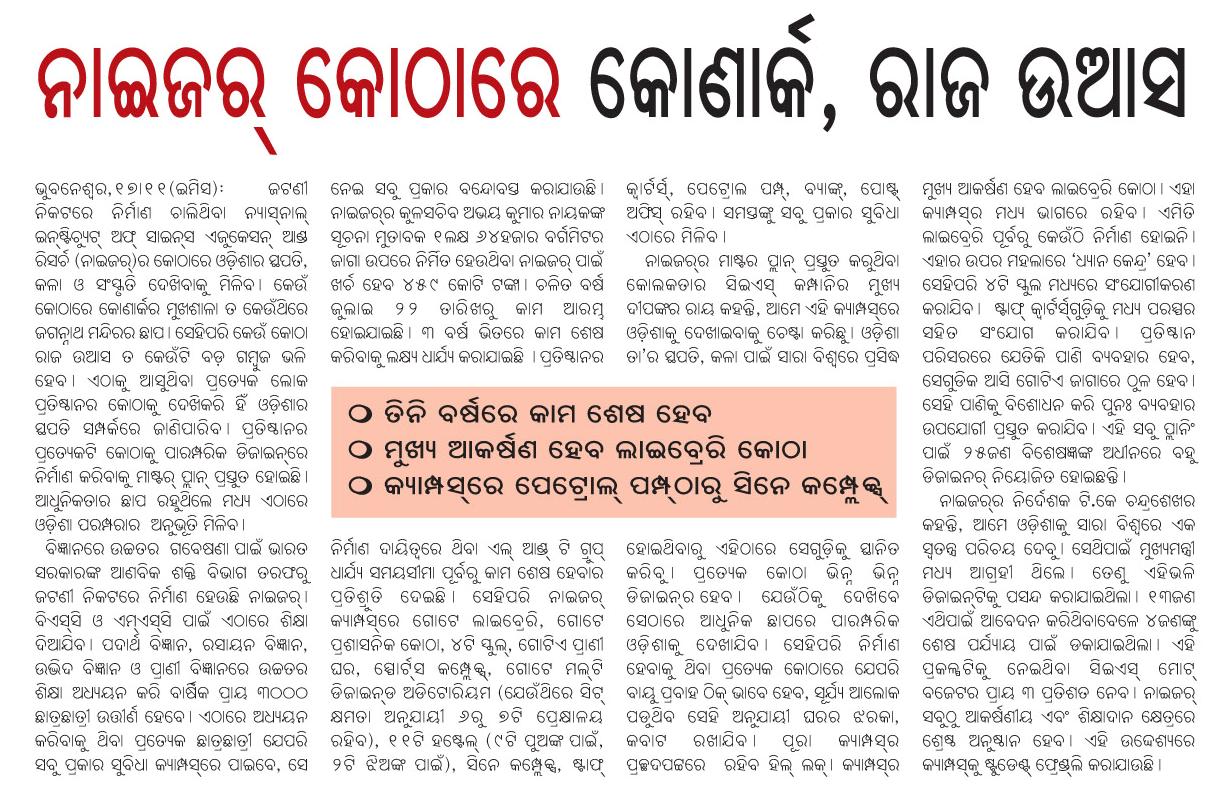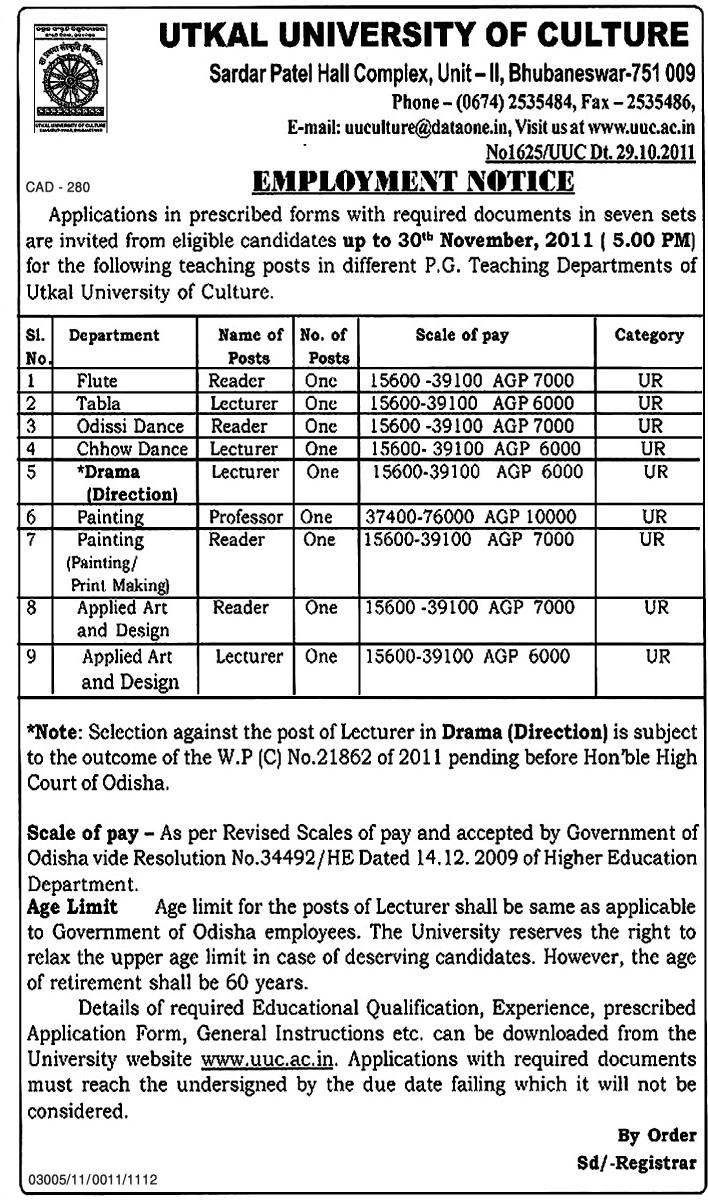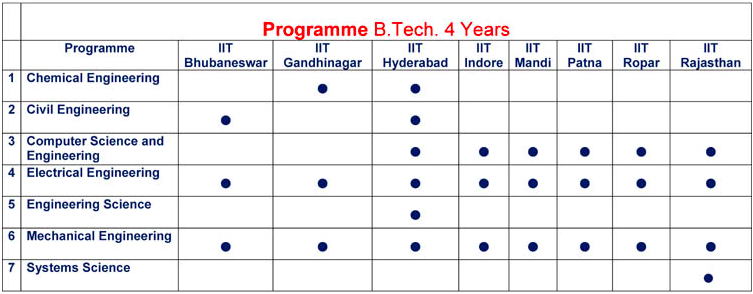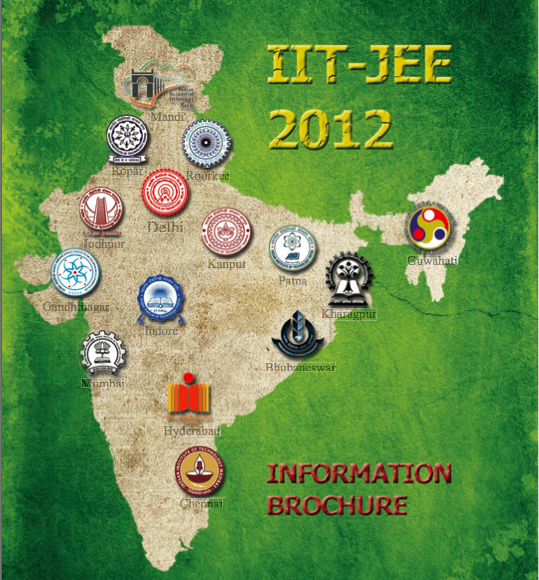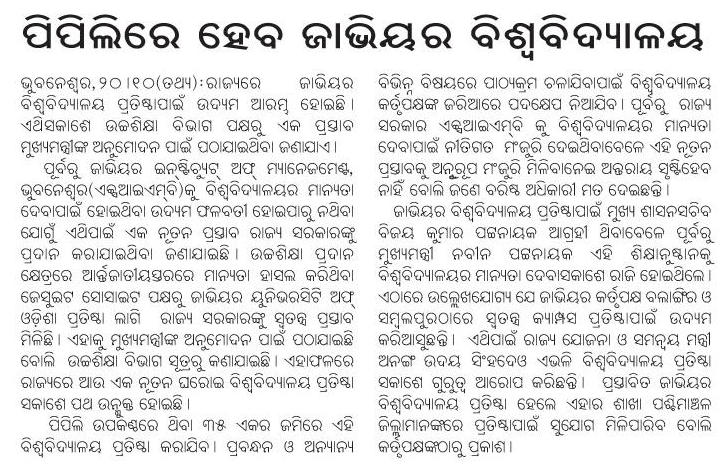The various reports are at http://www.innovationcouncil.gov.in/index.php?option=com_content&view=category&layout=blog&id=8&Itemid=10. The following excerpts are from the report at http://www.innovationcouncil.gov.in/images/stories/reportpeople/report%20to%20the%20people-full-report.pdf.
NInC is focused on encouraging and facilitating the creation of an Indian Model of Innovation by looking at five key parameters: Platform, Inclusion, Eco-system, Drivers and Discourse. The aim is to re-define innovations to go beyond formal R&D parameters and look at innovation as a broader concept that breaks sectoral silos and moves beyond a high-tech, product-based approach to include organisational, process and service innovation. The core idea is to innovate to produce affordable and qualitative solutions that address the needs of people at the Bottom of the Pyramid, eliminate disparity and focus on an inclusive growth model.
… Some key initiatives that NInC has focused on in the past year include: (a) Developing a framework to finance innovation for the Bottom of the Pyramid through the creation of an India Inclusive Innovation Fund; (b) Creating an eco-system for seeding innovations in regional industry with a focus on MSMEs, by facilitating the creation of Industry Innovation Clusters to drive job creation and productivity; (c) Leveraging our demographic dividend for innovation by creating a connected India through the spread of rural broadband in two years time to all 250,000 panchayats; (d) Nurturing innovation in the education system through action in schools and colleges by intervening in curriculum, talent-spotting of innovators among students and award of Innovation Fellowships, creation of a Meta University, as a global first, that rides on the National Knowledge Network to promote multi-disciplinary learning, facilitating the creation of innovation ecosystems at Universities through University Innovation Clusters; (e) Promoting an innovation culture through action in areas of communication and advocacy through an Innovation Portal and working through mass media organisations; (f) Creating an institutional framework for innovations in Government by facilitating the setting up of State Innovation Councils in each State, and Sectoral Innovation Councils aligned to Union Government Ministries; (g) Promotion of projects that create an innovation dividend like the setting up of a Rabindranath Tagore Knowledge City in Kolkata, setting up twenty Innovation Design Centres co-located in existing institutes; (h) Setting challenges for the Indian imagination to come up with solutions, especially those that relate to inclusive innovation; (i) Promoting co-creation and sharing of knowledge through Global Knowledge Partnerships, beginning with a Global Roundtable on Innovations for sharing ideas.
…
Developing an India Inclusive Innovation Fund
To promote inclusive innovation and entrepreneurship focusing on the needs of people in the lower echelons of society, an India Inclusive Innovation Fund (IIIF) was conceptualised, detailed and is currently under discussion with the Ministry of Finance and leaders of industry. The Fund seeks to promote enterprises engaged in developing solutions in key areas such as health, education, agriculture, handloom, handicrafts and other small business enterprises. The Fund will combine commercial and social returns. The Fund will be capitalised to an eventual target size of Rs 5000 crores to be achieved in phases. It will be kick-started with seed investment from the Government and bilateral/ multilateral institutions and go to scale with private capital. The Fund will be an autonomous, professionally managed entity with a social investment focus.
PROGRESS
The idea of the IIIF has been proposed to the Ministry of Finance and its initial contribution will kick start the Fund in the fiscal year 2012-13.
…
Nurturing Innovation through Education
To promote creativity and nurture innovations NInC has so far made six proposals to the Ministry of Human Resource Development (MHRD). These include five proposals made in May 2011 and one in September 2011.
(a) Creation of a separate scholarship stream of National Innovation Scholarships analogous to the National Talent Search Scheme. This will help identify talented children at the school level who think creatively, laterally and innovatively on issues that they perceive as important in their local environment. It is expected to have a multiplier effect of valuing creativity and innovation by parents, teachers and the learning system.
(b) Setting up an Innovation Centre in each DIET (District Institute of Education and Training) to enhance teacher training and enable them to become facilitators of creativity and innovative thinking. This could be done by tapping local creative talent on part-time basis into DIETs.
(c) Mapping of Local History, Ecology and Cultural Heritage by each High School in the country to create critical thinking on their local environment by students.
(d) Creation of a National Innovation Promotion Service to replace/add to National Service Scheme in Colleges to use college students to identify local innovations. This is a scheme of the Ministry of Youth Affairs and Sports which along with Ministry of HRD has been requested to examine its feasibility.
(e) Setting up a Meta University, as a redefinition of the university model in the 21st century by leveraging India’s National Knowledge Network to enable multi-disciplinary learning and collaborative knowledge creation.
(f) Setting up twenty Design Innovation Centres co-located in Institutes of National Importance. It has been proposed to set up these Design Innovation Centres in twenty select institutions and included in the 12th Plan for consideration by the Ministry of Human Resource Development. Co-location in campuses of national repute like IITs/NITs will help leveraging of academic and industry resources and give a boost to design capacity in the country.
(g) Setting up a pilot University Innovation Cluster. NInC proposes to identify and facilitate the development of 20 University Innovation Clusters across the country where innovation would be seeded through Cluster Innovation Centres.The CIC will provide a platform for the university and its partners to forge linkages between various stakeholders from industry and academia, initiate and assist innovation activities, encourage innovations in curricula and act as a catalyst and facilitator. It will also work closely with other industry clusters in its region. An initial pilot with University of Delhi has commenced and received overwhelming response from the student community.
PROGRESS
Ministry of Human Resource Development has green—lighted the following three proposals:
(a) Award of 1000 Innovation Fellowships at the School Level (Classes 9-12)
(b) Introducing the Mapping of Local History, Local Ecology and Local Culture and Heritage by all High Schools
(c) Setting up the first Meta University of the world for multi-disciplinary learning and collaborative learning All these three proposals will roll out in academic year 2012-13. Other proposals are also under consultation with Ministry of HRD.
(d) University of Delhi has set up a University Innovation Cluster as a pilot which has been widely welcomed
The 12th Five Year Plan will include all approved proposals. Most, except the proposal on Design Innovation Centres, can be done under existing policies and schemes by appropriate modifications.
…
Some of the key initiatives taken up by the National Innovation Council in its first year to nurture innovations through education are given below.
(a) Creation of a separate scholarship stream for National Innovation Scholarships analogous to the National Talent Search Scheme To complement the government’s National Talent Search Scheme, the NInC has proposed the introduction of a parallel stream of National Innovation Scholarships to be administered by NCERT and conducted through the decentralised management system it has put in place.This will help identify talented children at the High School and Secondary School level (Classes 9-12) who think creatively, laterally and innovatively on issues that they perceive as important. It will have a multiplier effect of valuing creativity and innovation by parents and teachers and will gradually evolve into a culture of valuing innovation in the schooling system. It is proposed that 1000 scholarships be considered for awarding each year under this scheme with 50% earmarked for innovations by students in schools located in non-urban areas and at least 33% earmarked for children from the field of liberal arts.
…
(e) Setting up a Meta University as a Global First to promote collaborative and multi-disciplinary learning using the National Knowledge Network
India pioneered the idea of the university with Nalanda and Taxila to explore a life of the mind and undertake an exploration of ideas.Today India is poised to reinvent the university of the 21st century as a new adventure of cross-cutting ideas facilitated by technology. In doing so it seeks to position the university as a cradle of innovation.The National Knowledge Network connecting India’s major knowledge institutions is already in place and provides a platform to facilitate this endeavour, further the fact that most of these major knowledge institutions in India are part of a public system, makes collaborative effort easier. Technology offers unprecedented opportunities to “disrupt the classroom” as traditionally understood, provide for individualised and customised learning and radically alter pedagogic systems to move towards collaborative and multi-disciplinary learning.
Seizing these new opportunities and leveraging the platform of the National Knowledge Network, the National Innovation Council has put forward a proposal to create the first global Meta University. The idea of a Meta University was first conceptualised by Charles Vest and later developed by Don Tapscott and Anthony Williams as a Global Network of Higher Learning to be realised in several stages.The basic idea of a Meta University as a collaborative platform where a network of Universities offers students a customised learning experience is eminently applicable in the Indian context.
The National Knowledge Network (NKN) initiated by the National Knowledge Commission, is already being implemented to connect all our universities, research institutions, libraries, laboratories, hospitals and agricultural institutions across the country with a high speed (multi gigabit) fibre based, broadband network. The NKN by networking all knowledge institutions and providing them with high speed connectivity aims to facilitate flow of information and create a platform for collaboration between researchers, academic faculty and students from diverse backgrounds and geographies. In addition, the Ministry of HRD aims to eventually provide connectivity to colleges and schools as well as support content creation through its initiatives. Further, the proposed Universities for Innovation Bill recognises flexibility as its DNA to facilitate innovation.Thus India provides unique opportunities for innovating with this idea of a ‘Meta University’ given the enormous unmet demand for high quality education in an environment of limited resources and the availability of a dedicated national network. It will enable the breaking down of silos of academic disciplines and help students to gain multi-disciplinary understanding to be able to create more “rounded” intellectuals for society.
The Meta University riding on the NKN envisages a collaborative and multi-disciplinary learning platform, where students enrolled in a primary college/university will be able to take courses available in other universities and colleges. With the help of Mentors, students will therefore be allowed to customise their learning experience and select options from a wide menu of choices, leveraging the specialisation of individual institutions. So it will be possible for an engineering student from, say IIT Kanpur to also enrol for a course in ancient history from the Jawaharlal Nehru University or a mathematics student from Indian Institute of Science pursue a course in comparative literature from the Jadavpur University.
The Meta University will reinterpret the concept of a University as not just a traditional, physical space of learning, but as a repository of knowledge and information that can be delivered in multiple ways, and can be accessed from anywhere and anytime. It will seek to enhance the learning experience through new and innovative delivery models of education that allow students and institutions to collaborate in unprecedented ways.
This model is low-cost, requires no brick-and-mortar, leapfrogs over conventional bottlenecks of non-availability of a talented faculty pool, and works within existing legal systems. It innovates on both the content and form of the twenty-first Century University and offers a unique model for the proposed fourteen Universities of Innovation mooted in India. It is hoped that this would become a model for the world to emulate to move towards collaborative and multi-disciplinary learning that redefines knowledge-creation and knowledge-sharing in the twenty-first century.
Though the internet and technology are fundamental to this conception of the Meta University, at the crux is not a new technology but a ‘new pedagogy’ that is more in tune with the requirements of the knowledge society of the twenty-first century. In such an environment there is a greater focus on moving from the chalk and talk model with the teacher at the centre, to a learner-centric, collaborative model that allows continuous learning from the environment.The web/internet therefore provides both a platform for communication and collaborations as well as a source of content.
The learning platform of the Meta University will incorporate these principles of collaborative and multi-disciplinary knowledge sharing, knowledge creation, openness and flexibility in its design. It will in effect be a test bed for experimenting with a new model of teaching and learning that may show the way for a new education model for the future.The detailed design of the Meta University will be undertaken by a core group of academics, heads of institutions and experts who would constitute the Board of Governors of this new Meta University. The National Innovation Council is working closely with government departments concerned and other stakeholders to implement these initiatives at the earliest.
(f) Setting up of 20 Design Innovation Centres by co-locating them with Institutes of National Importance Design is a key element of the innovation process and will be critical for driving innovation in the new knowledge economy. Design-driven innovations can ensure sustainable competitive edge, enhance industrial productivity and also address crucial challenges by harnessing design thinking for needs-based solutions. Design thinking is especially important for solving key problems because it works with a different set of processes: repeatedly reframing the problem, engaging with stakeholders, prototyping and testing solutions, exploring alternatives, visioning scenarios and so on.
In the last fifty years the world has seen dramatic changes and design has also transformed significantly along the way. Design and Design thinking are increasingly about building in capabilities that empower and enable people to use these resources, with quality of life and environment as the guiding principles, not just economic factors which are also important. However, we as a nation do not have enough state-of-the-art design institutes to enhance our innovation capabilities.The major bottleneck in clearance of setting up of Design Institutes across the country is availability of land, as well as access with an ambience conducive to professional education and trained and talented faculty. One such campus needs a minimum of 30 acres of land for construction of about 20,000 sq meter area of class rooms, studios, hostels, offices, faculty residences etc.
In this context, NInC has suggested a model of setting up Design Innovation Centres in twenty select locations to be included in the 12th Plan for consideration by the Ministry of Human Resource Development.These could be through co-location in campuses of national repute to ensure maximum convergence, optimum utilisation of existing resources and infrastructure, and to leverage a context of academia-industry interaction. These centres could be located in IITs, new IITs where there is industry presence, the NITs, and select Technical and Liberal Arts Universities. Co-location will address issues of availability of land and faculty, save costs, enable horizontal transfer of knowledge, as well as offer a ready talent pool to enable timely execution of this initiative. Also, co-locating these schools in institutes beyond IITs would also ensure that emphasis of design education is not on engineering and technology oriented product design alone, but could extend to other faculties/disciplines related to eco-friendly and green design for products and services, service design, communication design, systems design etc. broadly integrating design intervention in different sectors supporting economic growth and increasing employment opportunities. Further, existing National Institutes of Design could play a mentoring role to these centres given their expertise in the field.The aim is to make these Innovation Design Centres/Schools state-of-the-art institutions to enhance the innovation quotient in the country and foster a design culture.
Out of the above, the Ministry of Human Resource Development has green-lighted the following proposals: Award of 1000 innovation fellowships at the school level; Mapping of local history, local ecology and local culture and heritage by high school students; Setting up the first Meta University of the world for multi-disciplinary learning.
(g) Creation of Cluster Innovation Centres (CICs) at Universities
Over the years universities in India have become increasingly focused on their teaching function, imparting and disseminating knowledge and training to a large number of students.With a few notable exceptions research by and large has moved out of academic institutions to stand alone research centres and laboratories. Further, university linkages with industry and society have at best been weak and under developed. As a result, our Universities have not been at the vanguard of innovations that solve real world problems and result in creation of products and processes that boost the economy and help the common man. While far reaching systemic reforms in higher education are required and the government is committed to them, one significant way to revitalise the university system in the context of innovation is to strengthen its linkages with industry and society.
Recognising that educational institutions must be at the centre of the innovation process, in the last decade or so renewed efforts have been made by various stakeholders to promote innovations and entrepreneurship in our educational institutions. The Government has taken up various initiatives like setting up Innovation and Entrepreneurship Development Centres (IEDC) in educational institutions, Science & Technology Entrepreneur Parks, and Technology Business Incubators, in order to promote knowledge based and innovation driven enterprises. Other initiatives include creating better incentive structures to reward innovations, encouraging young talent through scholarships, making available risk/venture capital and other necessary ingredients to strengthen the institutional capacity for innovation in the country.
In order to strengthen these efforts and to make Universities hubs of innovation the National Innovation Council seeks to create Cluster Innovation Centres (CIC) at Universities with an aim to foster an ecosystem of innovation, and connect research with application for the benefit of society. The CIC will provide a platform for the university and its partners to forge linkages between various stakeholders from industry and academia, initiate and assist innovation activities, encourage innovations in curricula and act as a catalyst and facilitator. It will also work closely with other industry clusters in its region. The CIC will provide a range of services and facilities, starting from evaluating an idea for its innovation potential, advice on technical and commercial viability, advice on IPR issues, guidance on relevant schemes and grants, helping innovators find partners and collaborators including funding, business development and finally taking the products and processes to end users.The CIC will have an appropriate institutional structure to enable it to undertake a range of functions, and a lean management team with expertise in guiding stakeholders in innovation management.
The NInC aims to catalyse the creation of at least 20 such Cluster Innovation Centres at Universities and provide support for the clusters to bear fruit and sustain.The NInC is currently working with a few select academic institutions to showcase the potential of Cluster Innovation Centres and will scale up this activity to a larger number of educational institutions in the coming year.
November 18th, 2011
Author : Chitta Baral
The website of this summit is http://www.ficci.com/past-Events-page.asp?evid=20665. Following are excerpts from the press release on Dr. Montek Ahluwalia’s speech.
Inaugurating FICCI Higher Education Summit 2011: Strategies for Expansion in Higher Education in India’, Mr. Ahluwalia said, “The challenge before planners, policy makers and educationists, both in the public and private sector, was of producing world class Indian universities that could be counted in the top 200 rating list.” In the next 20 years we must see a significant number of educational institutions in that category, he declared.
Mr. Ahulwalia also underlined the need to lend an international flavour to Indian universities by inducting international faculty. This would not happen unless the government removes the restriction on employment of international faculty, he said.
For higher education, the 12th Plan objective was expansion, equality of access and excellence. The aim was to raise the gross enrolment ration from the current level of 15 per cent to 30 per cent over the next 15 years. “Expansion of higher education has to be balanced with equality of access, especially for those living in areas where educational institutes did not exist,” he said.
Following are excerpts from the press release on Sam Pitroda’s speech.
Addressing the FICCI Higher Education Summit 2011, Mr. Pitroda said, “Higher education reforms are essential if the nation is to meet the serious challenge of skill shortage that will not allow the economy to grow at 8-10 per cent annually. While many of the recommendations of the National Knowledge Commission are in the process of being implemented, we are waiting for the government to act on the recommendations retailing to reform of higher education.”
“The debate on what needs to be done ought to be over, the time now is to focus on action,” he said and added that “the Bills have already been drafted but none of them have been tabled in or passed by Parliament.”
Mr. Pitroda’s concern found an echo in FICCI President, Mr. Harsh Mariwala’s suggestion that although education continues to be a priority sector during the Twelfth Plan, unless the reform agenda initiated by the Ministry of Human Resource Development in the 11th Plan is carried forward within a stringent timeframe, the demographic dividend of a young population could become a demographic disaster for India as well as the world.
Mr. Mariwala hoped that the Foreign Education Providers’ Bill; Unfair Practices Bill; Tribunal Bill and the Accreditation Bill will be passed in the coming winter session of the Parliament and the National Commission for Higher Education and Research (NCHER) Bill 2010 and Innovation University Bill will be introduced in the winter session of the Parliament. The delay in implementation of the reforms is a serious impediment for the economic development of the country, he said and added that FICCI earnestly urges the political leadership to take cognizance of this fact.
Mr. Pitroda said that the government was creating a US$ 5 billion National Knowledge Network (NKN) which is expected to be ready in about nine months. The network would be a state-of-the-art multi- gigabit pan-India network for providing a unified high speed network backbone for all knowledge related institutions in the country. It would facilitate the building of quality institutions with requisite research facilities and creating a pool of highly trained professionals. The NKN will enable scientists, researchers and students from different backgrounds and diverse geographies to work closely for advancing human development in critical and emerging areas.
Following are excerpts from a report in Chronicle of Higher Education.
Mr. Sibal has said that private participation in higher education must be encouraged, and conference attendees agreed that if the government hopes to reach its goal of sending 30 percent of young people to college, both private and public participation are needed. The challenge, as always, is in weeding out the low-quality operators.
"The public perception of private higher education is in a range," said Montek Singh Ahluwalia, head of India’s Planning Commission, a top government policy-making body. "Many are good, but there is a problem of those not-very-good ones."
Mr. Ahluwalia argued that supply and demand will eventually eliminate the bad actors, but others disagreed.
"It will be difficult to weed them out," said M. Anandakrishnan, head of the Indian Institute of Technology’s Kanpur branch. Because there is more demand than supply, he said, it will take time for stakeholders to make discerning choices.
Another delegate, Sachi Hatakenaka, a British-based education researcher, argued that "private sector growth is good for quantity but not for quality."
… Still, said Mr. Agarwal, the next round of government higher-education planning will focus more on expanding capacity at existing institutions rather than adding new universities.
Some private players were hopeful that the government will look to the private sector more as an ally than an adversary in coming years.
November 16th, 2011
Author : Chitta Baral
Following is from a report in Telegraph by Priya Abarham.
The University Grant Commission (UGC) has sanctioned three new schools under the Central University of Orissa in Koraput.
These include School of Development Studies, School of Basic Sciences and Information Sciences and School of Biodiversity and Conservation of Natural Resources.
Following the sanction, three new courses have been started under each school from this academic year and admissions to these courses have begun.
The university has launched MSc in biodiversity and conservation of natural resources under School of Biodiversity and Conservation of Natural Resources in collaboration with the MS Swaminathan Research Foundation, Chennai.
Similarly, MA in economics has been launched under School of Development Studies and a five-year integrated course in mathematics has been launched under School of Basic Sciences and Information Sciences.
…Plans are afoot to start School of Health Sciences next year. “In response to a letter from the UGC, a detailed project report for the proposed medical college and hospital has already been submitted,” she said.
Three other MoUs have been signed with Jamia Hamdard University for collaborative programmes in nursing and community health, Narayan Hrudayalaya for courses in vocational development programmes in medical industry specific areas, and Public Health Foundation of India for collaboration in teaching and research for partnership under School of Health Sciences. The varsity is in also talks with the district hospital of Koraput for collaborative programmes in health sciences and allied programmes in the state.
Prior to this year the university had the following schools and courses.
| 1. School of Languages |
a) English (30 seats)
b) Oriya (30 seats) |
| 2. School of Social Sciences |
a) Anthropology & Tribal Studies (30 seats)
b) Sociology (30 seats)
c) Journalism and Mass Communication (30 seats) |
I appreciate the innovative strategy of the VC of getting help from reputed outside organizations for the new schools and new programs. Without that a young university in a backward and hinterland district and with a small faculty would not be able to provide quality education in the initial years.
If the university gets approval for a medical college next year then that would be a great achievement for the VC. We wish her and the university the best in that effort.
October 25th, 2011
Author : Chitta Baral
Following is an excerpt from a report in Times of India.
… the debate over Pujari’s brainchild SU Institute of Information Technology (SUIIT) has divided faculty in the varsity and educationists in the region.
While a section of them term the less than two-year old institute as the biggest success story for the varsity, others dismiss it as the culprit ruining traditional departments.
…Sadhu Charan Panda, former VC of Utkal University of Culture and a former faculty member of SU said SUIIT is the best thing that has happened to the university and to Sambalpur region to be relevant with the changing time and technology. "In less than two years of its existence, it has already attracted state-wide attention," he said.
Panda cautioned that an institutional mechanism should be put in place so that SUIIT continues to excel.
Established in 2010 as an autonomous constituent of SU, the institute imparting MCA, BTech, MTech and MSc in computer science, MSc (electronics) and MSc (bioinformatics) has proved to be a sought after institute in the region. Students from the institutes have got lucrative paid summer internships while several software companies have shown interest to come for campus recruitments, sources said. "Such a thing was an unheard of possibility for the varsity a year ago," pointed out a varsity teacher.
While the state government had given an initial budget of Rs 10 crore in 2009-10 for the institute, Rs 5 crore from Directorate of Distance and Continuing Education (DDCE) was given to it for construction of its buildings inside the varsity.
Not all are convinced with the "rare success story" eulogy for SUIIT. "Most of the courses being offered by the SUIIT were pulled out from different existing departments. It was not a new thing," said Prof B K Tripathy, senior-most professor in the university.
Electronics was taken out of physics department, computer science from mathematics while bioinformatics was pulled out from life sciences department.
These courses were already offered by the varsity, Prof Tripathy said, adding whether the consolidation has done wonders will be known after the first batch comes out of SUIIT next year.
With the varsity administration concentrating solely on SUIIT, other departments were suffering, said a teacher, adding "the varsity is getting reduced to an engineering college." Some teachers and the students’ union have questioned the logic of starting B Tech in SU.
"Most engineering colleges are not getting students for B Tech and are on the verge of closure. The VSS University of Technology, three km away from SU, is offering such a course. There was no need to start it here," reasoned Karunakar Supkar, chancellor’s nominee in the Syndicate.
The students’ union has objected to undergraduate courses being offered in the varsity where all other courses are at the post-graduate level. "The varsity was exclusively for PG students. Starting an undergraduate course was diluting its character, which is unacceptable," said student union general secretary Asis Chand.
The people with the view in blue should checkout the top universities in the world and whether they have undergraduate programs or not.
In regards to the view in yellow, Prof. Karunakar Supkar should check the statistics of what percentage of students in VSSUT are from the Sambalpur area and what percentage of students in SUIIT are from the Sambalpur area. My guess is that there are very few Sambalpur area students in VSSUT while a much larger percentage of the students in SUIIT will be from the Sambalpur area.
In previous articles we have highlighted many of the achievements of Prof. Arun Pujari. If he is not allowed a second 3 year tenure at Sambalpur University, that would be a big loss for Sambalpur University and Sambalpur.
October 19th, 2011
Author : Chitta Baral
The following quotes are from an article in pagalguy.com.
… a push from the state government, cheap land prices, a pool of students from the neighbouring states of Jharkhand, Bihar, West Bengal and the North East as well as investments by large corporate houses are slowly changing the eastern state’s identity. After Hyderabad, it is Odisha which is steadily becoming the focal point for educational institutes to set up their campuses.
… Ratnakar Rout, Joint Secretary, Department of Technical Education, Odisha. “We want to make Bhubaneshwar an educational hub,” he said. “The government wants institutes of international repute to start up so that students from the entire eastern belt can come here for education.” Rout added that many industrial houses, investors and institutes (including foreign universities) are also interested to start operating from Odisha. …
… Dr Somayajulu Garimella, director of IMI Bhubaneshwar, says that it is primarily the Odisha government’s proactive stance towards investment in the state that is paving the way for this migration. “The government is acting like a catalyst and there is fantastic support from them in terms of clearances,” said Garimella.
… According to Dr Harivansh Chaturvedi, director BIMTECH, the saturation of b-schools in other states, low living costs and burgeoning middle class population of urban Odisha are some other reasons for b-schools to choose to come to the state.
The Odisha government has been cooperative in terms of allotting land at cheaper prices, say educational administrators. “The government is friendly and we were alloted 30 acres of land at the cost of Rs 8 lakhs per acre,” said Chaturvedi. This was in stark contrast to the price of land in neighbouring states such as Uttar Pradesh and Haryana, where, according to Chaturvedi, land prices can go upto Rs 2 crores for an acre. “We should not invest too much on physical infrastructure like land, as it is expensive,” added Chaturvedi.
… Harivansh Chaturvedi has answers for some of these doubts. “Our target is not just the local students, but the aim is to tap the pan-India market,” he said. “Also, in terms of competition we are looking at the future and within five years there is a possibility that the government might allow foreign universities to set foot in this part of the country.” BIMTECH and IMI are also not very worried about the initial years in terms of placements as their Delhi campuses will mentor the ones in Bhubaneshwar until they can stand on their own feet.
… Sri Sri University, which does not enjoy the reputation that IMI or BIMTECH have as far as business education is concerned, has other ways of getting their graduates jobs. “The ‘Art of Living’ community boasts of one of the largest corporate following,” informed Malaya Malla, marketing manager of the university. “The university has received strong commitments from corporates for offering summer projects and final placements.”
October 3rd, 2011
Author : Chitta Baral
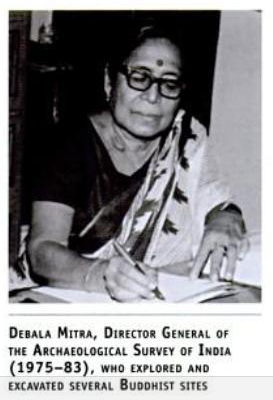 Mrs. Mitra was the Director General of the Archaeological Survey of India (1975-1983) [Page 448 of this book] and has written extensively on various Monuments of India.
Mrs. Mitra was the Director General of the Archaeological Survey of India (1975-1983) [Page 448 of this book] and has written extensively on various Monuments of India.